Renault Clio vs Dacia Bigster – Differences & prices compared
Compare performance, boot space, consumption and price in one view.
Find out now: which car is the better choice for you – Renault Clio or Dacia Bigster?
The Renault Clio (Hatchback) comes with a Full Hybrid or Petrol engine and Automatic or Manuel transmission. In comparison, the Dacia Bigster (SUV) features a Petrol MHEV, Full Hybrid or LPG engine with Manuel or Automatic transmission.
When it comes to boot capacity, the Renault Clio offers 391 L, while the Dacia Bigster provides 667 L – depending on how much space you need. If you’re looking for more power, decide whether the 143 HP of the Renault Clio or the 155 HP of the Dacia Bigster suits your needs better.
In terms of consumption, the values are 4.30 L per 100 km for the Renault Clio, and 4.70 L for the Dacia Bigster.
Price-wise, the Renault Clio starts at 16600 £, while the Dacia Bigster is available from 20600 £. Compare all the details and find out which model fits your lifestyle best!
In an intriguing showdown between the Renault Clio and the Dacia Bigster, car enthusiasts are treated to a clash of compact agility versus rugged affordability. The Renault Clio, renowned for its sleek design and urban-friendly efficiency, offers modern tech and a refined driving experience. Meanwhile, the Dacia Bigster impresses with its robust presence and budget-friendly approach, perfect for those seeking versatility and practicality without breaking the bank.
Renault Clio
The Renault Clio continues to impress with its sleek design and agile handling, making it a standout choice in the compact car segment. Inside, it offers a surprisingly spacious and comfortable cabin, crafted with high-quality materials that enhance the driving experience. Its fuel efficiency and reliable performance make it an attractive option for both city commuting and longer journeys.
details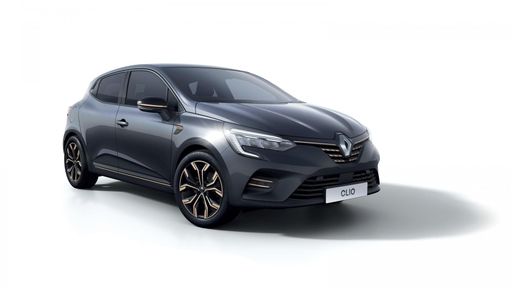 @ renault-presse.de
@ renault-presse.de
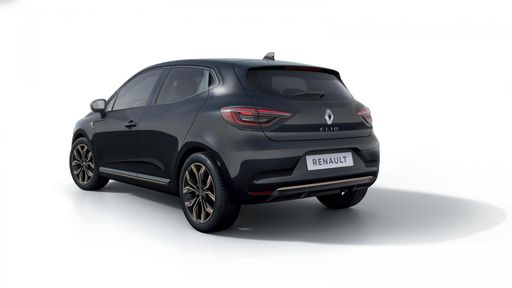 @ renault-presse.de
@ renault-presse.de
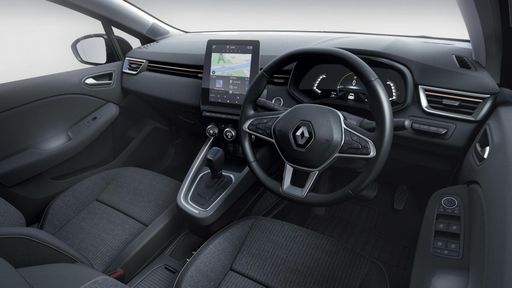 @ renault-presse.de
@ renault-presse.de
Dacia Bigster
The Bigster is poised to redefine the SUV segment with its bold design and spacious interior, catering to the needs of both families and adventure seekers alike. Emphasizing sustainability and practicality, this model reflects a modern approach to automotive engineering, making it a compelling choice for environmentally conscious drivers. With its striking presence on the road, the Bigster not only captures attention but also embodies a new era of versatile mobility.
details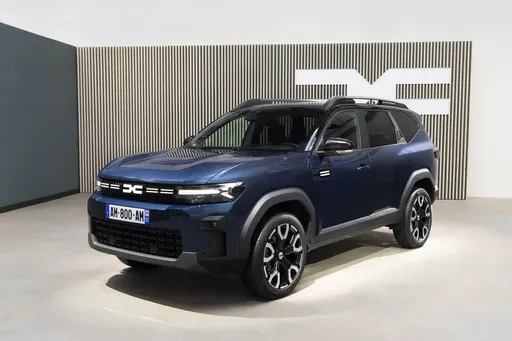 @ media.renault.at
@ media.renault.at
 @ media.renault.at
@ media.renault.at
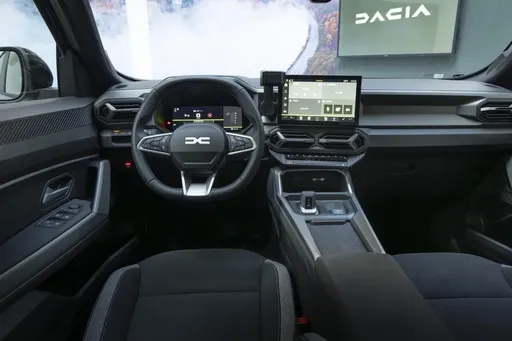 @ media.renault.at
@ media.renault.at
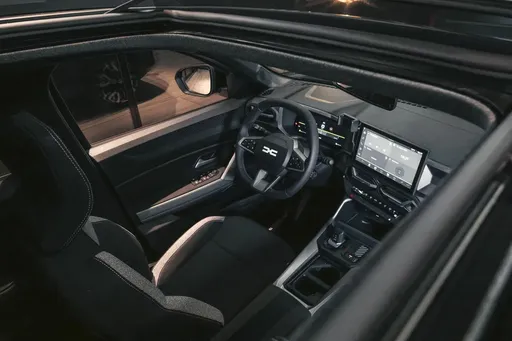 @ media.renault.at
@ media.renault.at
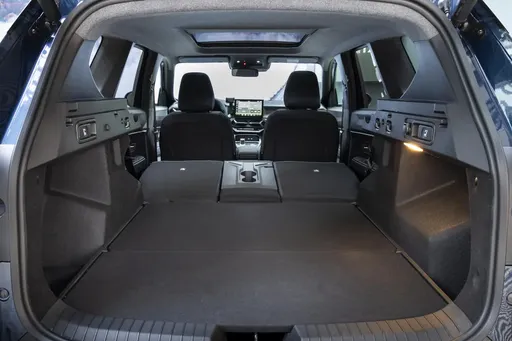 @ media.renault.at
@ media.renault.at
Compact versus Capable: Renault Clio vs. Dacia Bigster
In the ever-evolving automotive landscape, car enthusiasts are presented with a myriad of options to fit various needs and preferences. Today, we put the Renault Clio and the Dacia Bigster under the spotlight to weigh their strengths and virtues. Both belong to distinctly different categories, with the Clio representing the beloved hatchback class while the Bigster takes its place in the SUV segment. Let’s delve into the specifics and innovations each offers.
Design & Dimensions: Hatchback Meets SUV
The Renault Clio is renowned for its stylish, compact design, making it an urban favorite. At 4053 mm in length, 1798 mm in width, and 1440 mm in height, the Clio is perfect for city driving and tight parking. The five-door configuration enhances practicality while maintaining its sleek aesthetics.
In contrast, the Dacia Bigster offers a brawnier stance typical of SUVs. It measures substantially larger at 4570 mm in length, 1813 mm in width, and 1705 mm in height. Its robust build provides ample space and a commanding presence on the road, appealing to those who prefer a more substantial vehicle.
Engine & Performance: Power Under the Hood
Renault's Clio offers a variety of engine options, including full hybrid, petrol, and LPG. It caters to diverse preferences with power outputs ranging from 67 HP to a spirited 143 HP. The Clio’s hybrid version boasts a fuel consumption of just 4.3 L/100km, making it an economical choice for daily commutes. Its acceleration from 0-100 km/h in 9.3 seconds and a max speed of 174 km/h highlight its nimble character.
The Dacia Bigster, on the other hand, balances efficiency with power. With petrol MHEV and full hybrid engines offering up to 155 HP, it ensures a robust yet responsive drive. Its 0-100 km/h acceleration time stands at a respectable 9.7 seconds paired with a top speed of 180 km/h. The Bigster exhibits a moderate fuel consumption between 4.7 and 6.1 L/100km, ideal for those long road trips.
Interior & Capacity: Space for Every Need
Inside, the Clio fits five seats comfortably, ensuring a cozy but compact environment that is enhanced by a trunk capacity of up to 391 liters. Its focus on efficient spatial management makes it perfect for small families or individuals who appreciate agility and compactness without sacrificing essential space.
The Bigster turns heads with its generous interior space, tailored for adventure and family trips. Holding up to five passengers, it offers an impressive trunk space of up to 667 liters. This SUV is designed for those needing substantial cargo and passenger capacity, whether for daily errands or off-road adventures.
Technological Aspects: Modern Features
Both vehicles embrace modern technological elements, integrating innovative systems to enhance the driving experience. The Clio, with its newer 2023 and 2024 models, includes advanced infotainment systems, driver-assistance features, and eco-friendly technologies to align with contemporary demands.
Similarly, the Dacia Bigster leverages its 2025 model status to bring cutting-edge tech, accentuating safety and connectivity. Its SUV nature often incorporates more rugged technological adaptations suited for off-road challenges, making it a versatile choice for varied terrains.
Environmental Impact: Efficiency Matters
The Renault Clio stands out in environmental considerations, emitting between 97 and 130 g/km of CO2, reflecting its efficient nature. Its hybrid option furthers its appeal to eco-conscious drivers.
Dacia’s Bigster, while larger, keeps its environmental footprint moderate with emissions ranging from 106 to 137 g/km. Its hybrid options underscore a commitment to sustainability without compromising the power expected from an SUV.
Conclusion: Choosing Between Two Outstanding Options
The decision between the Renault Clio and the Dacia Bigster ultimately hinges on your lifestyle needs. The Clio's urban-friendly dimensions and fuel efficiency make it a fantastic hatchback for city life. Conversely, the Bigster delivers space, power, and versatility, ideal for families and adventurers seeking a capable SUV. Both vehicles offer compelling packages, meeting distinct demands in the automotive arena.

|

|
|
|
|
Costs and Consumption |
|
|---|---|
|
Price
16600 - 23000 £
|
Price
20600 - 26600 £
|
|
Consumption L/100km
4.3 - 5.3 L
|
Consumption L/100km
4.7 - 7.1 L
|
|
Consumption kWh/100km
-
|
Consumption kWh/100km
-
|
|
Electric Range
-
|
Electric Range
-
|
|
Battery Capacity
0.60 kWh
|
Battery Capacity
-
|
|
co2
97 - 121 g/km
|
co2
106 - 137 g/km
|
|
Fuel tank capacity
39 - 42 L
|
Fuel tank capacity
50 - 55 L
|
Dimensions and Body |
|
|---|---|
|
Body Type
Hatchback
|
Body Type
SUV
|
|
Seats
5
|
Seats
5
|
|
Doors
5
|
Doors
5
|
|
Curb weight
1124 - 1331 kg
|
Curb weight
1425 - 1547 kg
|
|
Trunk capacity
301 - 391 L
|
Trunk capacity
510 - 667 L
|
|
Length
4053 mm
|
Length
4570 mm
|
|
Width
1798 mm
|
Width
1813 mm
|
|
Height
1440 mm
|
Height
1705 mm
|
|
Payload
398 - 406 kg
|
Payload
383 - 467 kg
|
Engine and Performance |
|
|---|---|
|
Engine Type
Full Hybrid, Petrol
|
Engine Type
Petrol MHEV, Full Hybrid, LPG
|
|
Transmission
Automatic, Manuel
|
Transmission
Manuel, Automatic
|
|
Transmission Detail
Automatic Gearbox, Manual Gearbox
|
Transmission Detail
Manual Gearbox, Automated Manual
|
|
Drive Type
Front-Wheel Drive
|
Drive Type
All-Wheel Drive, Front-Wheel Drive
|
|
Power HP
67 - 143 HP
|
Power HP
130 - 155 HP
|
|
Acceleration 0-100km/h
9.3 - 17.1 s
|
Acceleration 0-100km/h
9.7 - 11.2 s
|
|
Max Speed
160 - 174 km/h
|
Max Speed
180 km/h
|
|
Torque
95 - 205 Nm
|
Torque
230 Nm
|
|
Number of Cylinders
3 - 4
|
Number of Cylinders
3 - 4
|
|
Power kW
49 - 105 kW
|
Power kW
96 - 115 kW
|
|
Engine capacity
999 - 1598 cm3
|
Engine capacity
1199 - 1799 cm3
|
General |
|
|---|---|
|
Model Year
2023 - 2025
|
Model Year
2025
|
|
CO2 Efficiency Class
C, D
|
CO2 Efficiency Class
E, D, C
|
|
Brand
Renault
|
Brand
Dacia
|
Renault Clio
Introduction to the Renault Clio
The Renault Clio, a popular choice among compact cars, has continually advanced its design and technology to maintain a strong position in the automotive market. With enhancements in engineering, efficiency, and aesthetic appeal, the Clio remains a top contender in the hatchback category.
Advanced Hybrid Technology
The Renault Clio's hybrid technology is one of its standout features. The E-Tech Hybrid system optimises both performance and efficiency, offering a seamless transition between electric and fuel-powered driving. This setup results in an impressive fuel consumption rate of 4.3 L/100km, making it an attractive option for eco-conscious drivers.
Efficient Engine Options
Renault offers a variety of engine choices for the Clio, accommodating different driving styles and preferences. From the economical SCe 65 manual variant to the powerful TCe 100 LPG gas version, each option is engineered to balance performance with fuel efficiency. With outputs ranging from 67 to 143 PS, drivers can enjoy a tailored driving experience.
Design and Comfort
The Renault Clio stands out with its sleek and modern design, characterized by its hatchback body style. The interior boasts an ergonomic layout with seating for five, ensuring passenger comfort and convenience. With a boot capacity of 301 to 391 litres, the Clio also offers practical storage solutions for everyday use.
Safety and Innovation
Safety is a key priority for Renault, and the Clio reflects this commitment with its suite of innovative safety features. Advanced driver-assistance systems are integrated throughout, enhancing both safety and usability. The Clio encompasses features like lane departure warning, automatic emergency braking, and adaptive cruise control.
Cost Efficiency and Environmental Impact
The Renault Clio not only offers affordability with pricing ranging from €18,450 to €26,800, but also promises low running costs. With CO2 emissions between 97 and 130 g/km, the Clio fits well within the C and D efficiency classes. This makes it a cost-effective and environmentally friendly choice for modern drivers.
Conclusion
Renault Clio remains a dynamic, dependable and economical option in the compact car segment. With its innovative technologies, diverse engine options, and commitment to safety and design, the Clio continues to impress and adapt to the evolving demands of the automotive world.
Dacia Bigster
Introducing the Dacia Bigster: A Game Changer in the SUV Market
The Dacia Bigster is poised to redefine the landscape of compact SUVs with its striking design, innovative technologies, and a variety of powertrains that cater to a broad range of consumers. As the automotive world continues to shift towards sustainability without compromising performance, the Bigster stands out with its thoughtful engineering and modern features.
Striking Design and Practicality
From the moment you lay eyes on the Bigster, you can see that it was designed with purpose. Its robust silhouette, bold front fascia, and wide stance convey a sense of strength and stability. With dimensions of 4570 mm in length, 1813 mm in width, and standing 1705 mm tall, the Bigster offers a spacious cabin that comfortably accommodates five passengers. Coupled with a trunk capacity ranging from 546 to 667 liters, this SUV is as practical as it is stylish, making it perfect for both city driving and outdoor adventures.
Powerful and Efficient Engines
The Dacia Bigster offers a range of engine options designed to meet diverse consumer needs. The line-up includes two petrol MHEV variants: the TCe 130 and TCe 140, both available in front-wheel drive and all-wheel drive configurations. These engines not only deliver robust performance, with outputs between 130 and 140 HP, but also prioritize fuel efficiency, achieving consumption figures as low as 5.5 liters per 100 kilometers.
For those seeking an eco-friendlier option, the Bigster also features a Full Hybrid variant, the Hybrid 155, which offers an impressive 155 HP with a fuel efficiency rating of just 4.7 L/100 km. Additionally, the ECO-G 140 LPG variant allows for even more cost-effective driving without sacrificing power, catering especially to environmentally conscious consumers.
Innovative Technology Enhancements
The Dacia Bigster is equipped with an array of advanced technological features aimed at enhancing the driving experience. Its comprehensive infotainment system integrates a user-friendly interface with smartphone connectivity, ensuring that drivers can stay connected while on the road. Safety has also been prioritized, with features such as advanced driver assistance systems designed to keep both the driver and passengers secure.
Performance Meets Efficiency
Performance is a central theme in the Bigster's engineering. The SUV boasts a range of acceleration times, with the TCe 130 reaching 0-100 km/h in approximately 11.2 seconds and the TCe 140 doing so in a swift 9.8 seconds. The Hybrid model enhances this performance even further, offering a 0-100 km/h time of just 9.7 seconds. With a maximum speed of 180 km/h, the Bigster is not only capable but also thrilling to drive.
Comfort and Versatility
Inside, the Dacia Bigster emphasizes comfort and versatility with a roomy cabin that features high-quality materials and modern finishes. The SUV is designed with adjustable seating configurations and ample legroom, making it ideal for both daily commutes and longer journeys. It's also worth mentioning that the vehicle's curb weights range from 1425 kg to 1503 kg, optimized for performance and efficiency.
Conclusion: The Future of Driving with Dacia Bigster
The Dacia Bigster is more than just a new SUV; it represents a significant step forward in blending efficiency, performance, and practicality in an ever-evolving automotive landscape. With various engine options, advanced features, and a commitment to sustainability, it is clear that the Bigster is designed to meet the demands of modern drivers while appealing to a wide audience. Whether you are looking for a reliable city cruiser or a capable outdoor companion, the Dacia Bigster is set to deliver on all fronts.
What drivetrain options does the Renault Clio have?
The Renault Clio is offered with Front-Wheel Drive.
The prices and data displayed are estimates based on German list prices and may vary by country. This information is not legally binding.
